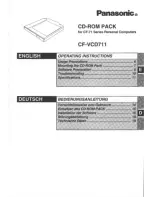
STEP 4: SETTING STANDBY CURRENT
After the GR214V has not received step pulses for one second it will enter standby mode, where it will limit current to a user-
set percentage of maximum current. The GR214V will enter reduced-heating switching mode during this time to further
decrease motor temperature during times of inactivity. There are two ways to set the standby current value.
ONBOARD STANDBY TRIMPOT
Trimpot T2 on the GR214V is dedicated to setting the standby current value. Turning this fully CCW (8 o’clock) will reduce
current to 0% of the set value, while turning it fully CW (4 o’clock) will set the standby current to 100% of set current. This
trimpot is a single turn component with a total range of approximately 270
o
of motion. A diagram of the adjustment trimpot is
below:
EXTERNAL STANDBY RESISTOR
An external resistor can be used to set the standby current on the GR214V in lieu of using the onboard trimpot. If any method
of current set but the DIP switch is used then this is the mandatory way of setting standby current. This resistor will be placed
between CN1 PIN 1 (Standby Set) and CN1 PIN 3 (GND)
The formula for the resistor is below:
R2 = 500 * (Run Amps * Standby Amps) / (Run Amps – Standby Amps)
If a motor is rated for 6A and a standby current of 2A is required, the formula would be worked out as below:
R2 = 500 * (6A * 2A) / (6A – 2A)
R2 = 500 * 12 / 4
R2 = 1500
In this example you would want to use a 1.5K resistor between CN1 PIN 1 (Standby Set) and CN1 PIN 3 (GND). Component
tolerance for this setting can be 5%, so the nearest 5% resistor value to the calculated value is acceptable. As with the current
set resistor, the component leads should be kept as short as possible to prevent noise problems.
STEP 5: USING PUSH-BUTTON SELF-TEST TO VERIFY MOTOR CONNECTIONS
Once the motor is connected to the GR214V power may be applied to the drive. The motor should have holding torque (resist
being rotated by hand) and the green indicator LED should be blinking. You may now begin self-test and tuning.
In order to use the onboard self-test you will need to locate the button near TRIM1. The button should be pushed with either a
finger (without the cover) or with a blunt nonconductive rod (like a ceramic screwdriver or plastic dowel). As long as the button
is depressed the motor will move one revolution CW and one revolution CCW; the speed of the motor is such that you can use
it to tune out any low speed vibration with the ADJUST trimpot.
With the motor tuned and verified to run correctly, you may move on to the fourth and final step to getting the drive to run.






























